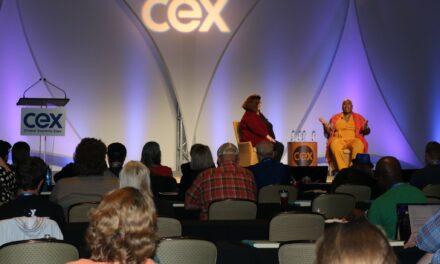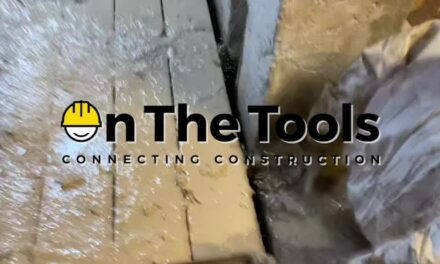Dear Visitor,
Welcome. Come inside and stay awhile.
We hope you’ll find what you need.
If not, we hope you’ll let us know what you were looking for or if the experience didn’t meet your expectations.
If you enjoy your visit, we hope you’ll tell your friends and return.
Yours Truly,
Entrepreneur, Content Business
That note encapsulates what every entrepreneur in the creator economy should want to happen when a visitor, listener, or viewer arrives at their content site.
A high-quality customer experience is more likely to prompt the customer to buy – making both expensive and impulse purchases, according to multiple studies.
A high-quality customer experience is more likely to prompt the customer to buy, according to studies. #ContentBusiness #CreatorEconomy Share on XNow’s a good time to put your creator hat to the side and put on your entrepreneur’s chapeau. Ask yourself, “What does our customer experience tell our audience?”
What is the customer experience in the creator economy?
As a customer of businesses (and a user of the internet) for years, you already have a good idea of what a good experience means. And you probably have an even better idea of what it isn’t.
Put your experience to good use in this evaluation. Newsweek and Statista used five categories when they scored the best companies for customer service – quality of communication, professional competence, range of services, customer focus, and accessibility (i.e., availability).
While they focused on retail businesses, those generally also work for a content business, too. Let’s explore.
Communication and accessibility
The person behind the content business often plays a larger role than those who lead a traditional big business. In some cases, your visibility may be part of the brand. In many situations, you give the operation its voice. You bring it to life, and your audience is attracted to that.
That means a big part of your role is to connect with your audience – answer their inquiries promptly, interact with them in your community, and extend personal invitations to your events, new content products, etc.
But communication also is about the general experience. Come up with a list of the top three reasons visitors come to your website or other digital property. Walk through your digital properties for each purpose. How easy is it to find what they’re looking for? How many clicks do they have to make to access their desired content? Do they have to read or listen to all the content to find what they want, or are subheads or time-stamped tables of content there to help? The point is to make it as simple as possible to get to and consume the targeted content.
Pick the top 3 reasons visitors come to your digital property. Walk through each as they would to see how easy it is to find and use what they want, says @AnnGynn. #CX #CreatorEconomy Share on XFinally, evaluate your digital properties to understand how well they’re designed to be accessible to all. Here’s an accessible content checklist from Princeton to help you know what to look for.
Professional competence
In a content business, professional competence manifests itself in several ways. Generally, you should have an expertise or special experience that makes you well-suited to create content on this topic. In your bio or about page, showcase your credentials or explain your experiences related to your content tilt.
Specifically, you must make sure all the information conveyed in your content is accurate, attributed, and up to date. Consider contracting with a proofreader to edit and fact-check your content. If you include dated material in your content, make a note on the calendar to update it at least once a year.
Remember, you don’t always have to be the expert in your content. If you have an angle on a topic but don’t have the experience, think about partnering with another creator to develop something. You also could interview someone who has that expertise. (Just make sure to vet your partner or interview subject’s credentials.)
Range of services
A well-served audience likely will want to buy from your business. So you need to know what products and services your audience is most likely to buy.
Ask your audience directly and indirectly. Get their feedback on offerings you’re considering. Even better, look at your analytics – what does their behavior tell you they want? Is there one topic, article, episode, or video that gets more traffic than anything else? Or is there a piece of content where they spend the most time? Those can be good places to start when considering new products.
Use your first products or services to inform your next ones. For example, if you have an introductory class, your customers will likely want to buy the intermediate or graduate course to expand their skills. Make it easy for them to get that from your business, so they don’t have to go elsewhere.
Customer focus
I’m going to expand this from customer focus to audience focus because that’s the foundation of any successful content business. Everything you do must be done through the lens of the audience. That’s why you really need to know who they are and why they might seek the content you create.
That general research and understanding of your target audience should inform future decisions. Every time you plan a new content asset, product, etc., ask yourself: Would my audience want this? What would be most relevant or interesting to them? How will they want to consume it? When do they want or need it?
Every time you plan a new content asset, ask if your audience would want it and why/how/when they want to consume it, says @AnnGynn. #CustomerExperience #CX #CreatorEconomy Share on XAsk those questions to the business side, too. It’s helpful to know what would prompt your audience to pay for your products or services. (Spoiler alert: Often, it’s based on their customer experience with you and your brand.)
Create a great customer experience (CX)
By putting yourself in the shoes of your audience/customer, you can create a better experience that will attract them to your content, encourage them to stick around, and ultimately make a purchase. And then, maybe you’ll get an email like this:
Dear Business Owner,
Thank you. I recently visited your website and then listened to your podcast.
You gave me exactly what I was looking for, and I didn’t have to go down the rabbit hole to find it.
I ended up subscribing to your podcast and bought your introductory online course.
I even told two friends about my great experience.
Yours Truly,
Satisfied Customer
About the author
Ann regularly combines words and strategy for B2B, B2C, and nonprofits, continuing to live up to her high school nickname, Editor Ann. An IABC Communicator of the Year and founder of G Force Communication, Ann coaches and trains professionals in all things content. Connect with her on LinkedIn and Twitter.










